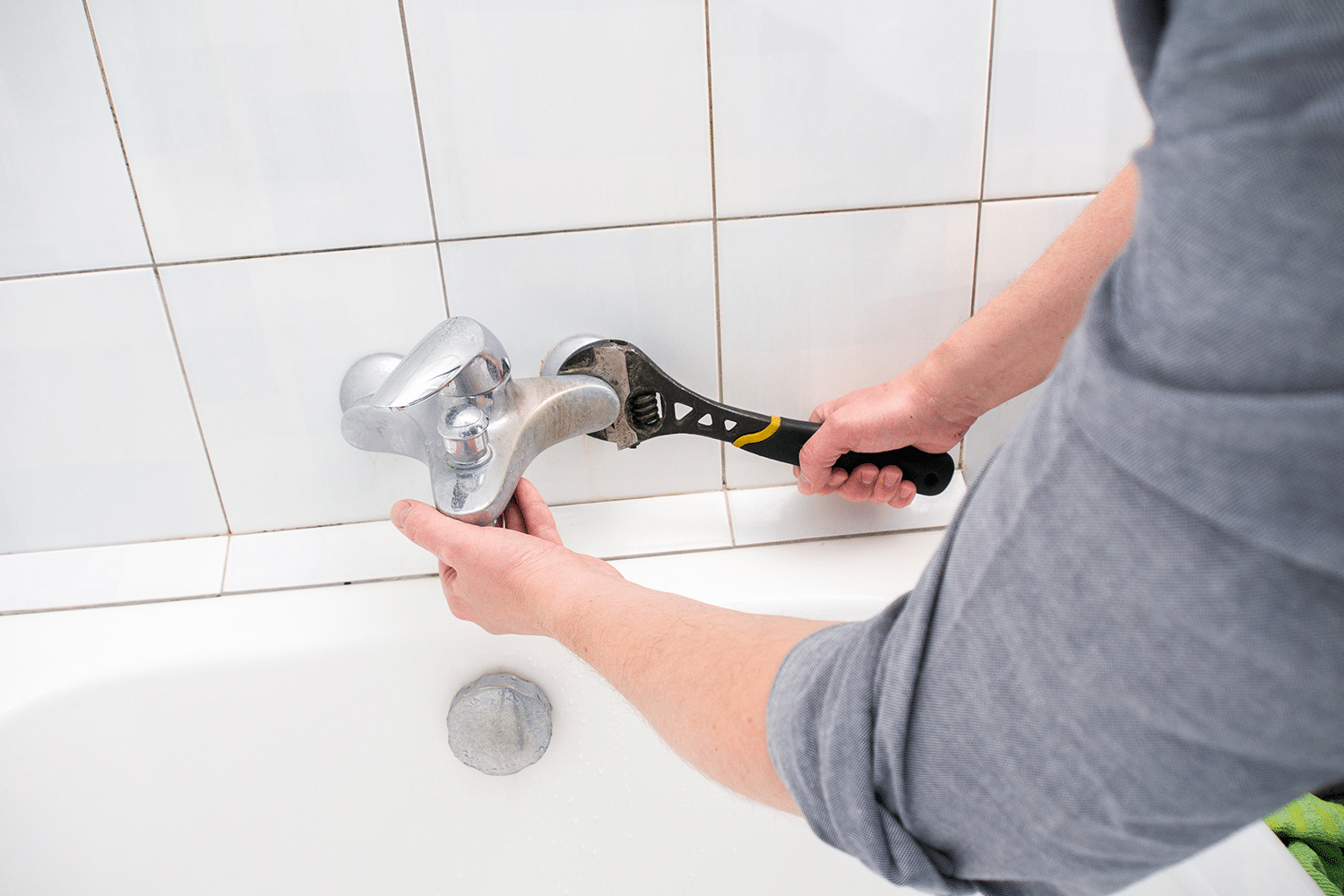Right here down the page you can get lots of incredibly good answers when it comes to What Causes Leaky Faucets & How To Fix Them.

Dripping faucets might feel like a small inconvenience, however their impact surpasses simply the nuisance of the audio. From wasting water to sustaining unnecessary economic expenses and health risks, overlooking a leaking tap can result in numerous repercussions. In this article, we'll look into why it's vital to address this typical house issue without delay and successfully.
Wastage of Water
Environmental Effect
Dripping faucets contribute significantly to water wastage. According to the Epa (EPA), a solitary tap dripping at one drip per second can lose greater than 3,000 gallons of water each year. This not just pressures water resources but likewise affects ecosystems and wild animals depending on them.
Financial Costs
Boosted Water Expenses
Past the ecological effect, leaking taps can blow up water costs substantially. The accumulated wastefulness gradually translates right into greater energy expenses, which can have been prevented with timely fixings.
Possible Property Damages
Moreover, long term dripping can bring about damage to components and surfaces surrounding the tap. Water accumulation can trigger discoloration, corrosion, and even architectural issues if left unattended, resulting in extra repair work expenses.
Health and wellness Worries
Mold and Mold Development
The consistent presence of dampness from a dripping tap creates an excellent atmosphere for mold and mildew and mildew development. These fungi not only jeopardize interior air high quality yet likewise present health and wellness threats, particularly for people with respiratory conditions or allergies.
Waterborne Illness
Stagnant water in dripping faucets can end up being a breeding ground for germs and other microorganisms, boosting the risk of waterborne illness. Impurities such as Legionella bacteria grow in stagnant water, possibly leading to serious ailments when consumed or breathed in.
Do it yourself vs. Expert Repair
Advantages and disadvantages of Do It Yourself Repair Service
While some may try to take care of a dripping tap themselves, do it yourself repair work come with their own set of obstacles. Without proper expertise and devices, do it yourself attempts can intensify the concern or lead to insufficient repairs, lengthening the issue.
Advantages of Working With a Professional Plumber
Employing a specialist plumber ensures that the underlying source of the dripping tap is addressed properly. Plumbers possess the experience and tools to detect and fix tap concerns effectively, conserving time and lessening the threat of additional damages.
Step-by-Step Guide to Fixing a Dripping Faucet
Tools Needed
Prior to attempting to fix a leaking faucet, collect the essential devices, consisting of a flexible wrench, screwdrivers, replacement components (such as washing machines or cartridges), and plumber's tape.
Typical Faucet Issues and Their Solutions
Identify the kind of tap and the specific concern creating the drip. Usual troubles consist of damaged washing machines, corroded valve seats, or faulty O-rings. Refer to maker instructions or online tutorials for step-by-step guidance on repairs.
Preventive Measures
Routine Maintenance Tips
To stop leaking faucets, do regular upkeep such as cleansing aerators, evaluating for leakages, and replacing worn-out components promptly. Furthermore, think about setting up water-saving devices or upgrading to extra efficient fixtures.
Significance of Prompt Repairs
Dealing with leaking faucets as soon as they're noticed stops additional water wastefulness and prospective damage, inevitably conserving both water and cash over time.
Impact on Property Worth
Understanding of Well-Maintained Building
Keeping a residential property in good condition, including resolving upkeep concerns like dripping faucets, enhances its regarded worth and worth among possible purchasers or occupants.
Impact on Resale Value
Characteristics with well-maintained plumbing components, including faucets, command higher resale worths in the property market. Resolving leaking faucets can contribute to a favorable impact throughout home evaluations and negotiations.
Environmental Duty
Specific Payment to Conservation
Taking responsibility for dealing with trickling taps aligns with more comprehensive efforts towards water conservation and environmental sustainability. Every individual's activities collectively make a considerable effect on preserving precious resources.
Lasting Living Practices
By focusing on prompt fixings and embracing water-saving practices, individuals add to lasting living methods that benefit both present and future generations.
Verdict
Resolving a dripping tap exceeds plain ease; it's a necessary action towards preserving water, lowering monetary prices, and protecting wellness and residential property. Whether via DIY repair services or professional help, taking action to fix leaking taps is a little yet impactful way to promote accountable stewardship of sources and add to a much healthier, extra lasting future.
How to Fix a Leaky Faucet: Step-by-Step Repair Guide
A leaky faucet may seem like a simple annoyance, but if it's not fixed promptly, that leak could cost hundreds to potentially thousands. From water damage to mold, mildew, and high water bills, even a tiny leak can be catastrophic if left unattended. Damage like this can even affect the overall value of your home, so it's important to take the right approach for leaky faucet repair. You may need the help of a plumber in some cases, but we've got a few tips you can try on how to fix a leaky faucet before calling the pros.
Four Faucet Types
When you're learning how to fix a leaky faucet, the first step is knowing what kind of faucet you're working with! There are four common types.
Cartridge Faucets
Cartridge faucets come in one- or two-handled varieties. In one-handled cartridge faucets, hot and cold water combines in a single cartridge. In the two-handled versions, hot and cold water are controlled separately and mixed in the faucet.
Ball Faucets
Ball faucets have a single lever you push up and down to adjust the pressure and rotate to change the temperature. A slotted metal ball controls the amount of water allowed into the spout.
Compression Washer Faucets
They're the oldest type of faucet, but they're still used in many homes — especially older ones. Compression faucets have two separate handles that, when turned, raise or lower the washer that seals a water valve. This valve stops water from flowing through the faucet when it is turned off.
Disc Faucets
Disc faucets rarely need to be repaired due to their maintenance-free design. The water flow is controlled by two discs — the upper one raises and lowers against a fixed lower disc, creating a watertight seal. If your disc faucet starts leaking, you may need to replace the seals or clean residue buildup from the inlets.
Fixing a Leaky Faucet
Step 1: Turn Off the Water
Whether you're learning how to fix a leaky bathtub faucet or how to fix a leaky kitchen faucet, always turn off the water supply to your working area when you're fixing a leak. The last thing you want is a flood added to your list of things to fix.
Look for the shutoff valves below your sink or around the tub and turn them clockwise to stop the water flow. If your faucet doesn't have shutoff valves, you may need to turn off the water for the whole house. Check to make sure it's off by turning the faucet on. If nothing comes out, you're ready to start the repair.
Step 2: Take Apart the Faucet
How you disassemble your faucet depends on the type of fixture you have. You can use a flathead screwdriver to remove the caps on top of the handle or handles for cartridge and compression faucets. Inside, you should see handle screws. Unscrew these with a screwdriver to remove the handle.
Disc- and ball-style faucets will typically have an inlet screw near the handle, and removing that will reveal the interior of the faucet.
Detach the Valve Stem
For cartridge- and compression-style faucets, you'll see the inner valve stem or cartridge once you remove the faucet handles. If you have a compression faucet, unscrew the brass valve stem. If you have a cartridge faucet, pull out the cartridge. If your cartridge has been in place for a while, it may require some tools or extra force to remove it due to mineral deposits.
Examine and Replace Parts
Once you've removed the parts, check them out to confirm what needs to be replaced. You may see corroded rubber washers, O-rings, stems, or cartridges. On a ball-style faucet, check the seats and springs for damage.
If you need to repair a leaky disc faucet, check the inlet and seals on the lower disc.
Once you determine what parts must be replaced, visit your local hardware store. Bring the damaged parts with you to ensure you can purchase the correct components to replace them.
Clean Valves and Faucet Cavity
If you've removed a stem or cartridge, you may notice mineral buildup in the faucet's threads. Use white vinegar to clean the valve seat by soaking it for a few minutes, then scrub it away with a soft toothbrush and rinse with warm water. You can also clean the interior of the faucet in the same way.
Reassemble the Faucet
Once your faucet is cleaned and the required parts have been replaced, it's time to reassemble it. Put the pieces back together and slowly turn the water supply back on. Doing this slowly is crucial because too much initial water pressure can damage the new hardware you've just installed.
https://homewarranty.firstam.com/blog/how-to-fix-leaky-faucet

Do you like reading up on How to Fix a Dripping or Leaky Faucet ? Try to leave a remark down below. We will be happy to find out your opinions about this blog entry. We are looking forward that you visit us again in the near future. Sharing is nice. Who knows, you could be doing someone a favor. Thanks a lot for your time invested reading it.
 Angus T. Jones Then & Now!
Angus T. Jones Then & Now! Patrick Renna Then & Now!
Patrick Renna Then & Now! Robert Downey Jr. Then & Now!
Robert Downey Jr. Then & Now! Heath Ledger Then & Now!
Heath Ledger Then & Now! The Olsen Twins Then & Now!
The Olsen Twins Then & Now!